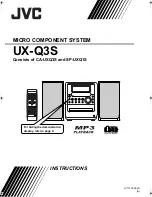
10
Introduction
■
What Is USB?
USB stands for Universal Serial Bus, and is a new interface used to connect
various peripherals to a computer.
USB allows a variety of peripheral devices to be connected via a single USB
cable, and is far faster than the earlier serial port, allowing audio to be
recorded or played while playing MIDI data.
It also allows peripheral devices to be connected or disconnected while the
power is left on, and the computer will automatically recognize such
devices. (For some peripherals, it may be necessary to make settings or
perform other procedures.)
■
GM/General MIDI
fig.GM Logo
General MIDI is a set of recommendations which seeks to provide a way to
go beyond the limitations of proprietary designs, and standardize the MIDI
capabilities of sound generating devices. Sound generating devices and
music files that meet the General MIDI standard bear the General MIDI logo
(
).
Music files bearing the General MIDI logo can be played back using any
General MIDI sound generating unit to produce essentially the same
musical performance.
■
GM 2/General MIDI 2
fig.GM2 Logo
The upwardly compatible General MIDI 2 (
) recommendations pick
up where the original General MIDI left off, offering enhanced expressive
capabilities, and even greater compatibility.
Issues that were not covered by the original General MIDI
recommendations, such as how sounds are to be edited, and how effects
should be handled, have now been precisely defined. Moreover, the
available sounds have been expanded.
General MIDI 2 compliant sound generators are capable of reliably playing
back music files that carry either the General MIDI or General MIDI 2 logo.
In some cases, the conventional form of General MIDI, which does not
include the new enhancements, is referred to as “General MIDI 1” as a way
of distinguishing it from General MIDI 2.











































